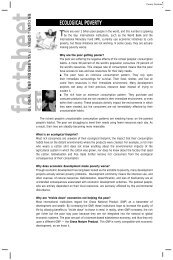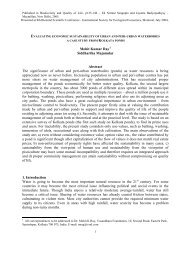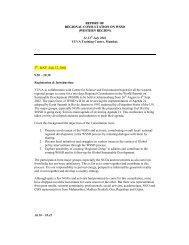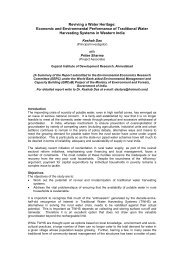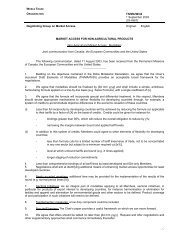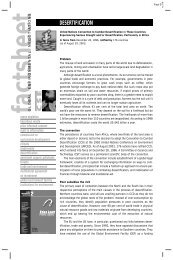Black-necked Crane - WWF-India
Black-necked Crane - WWF-India
Black-necked Crane - WWF-India
You also want an ePaper? Increase the reach of your titles
YUMPU automatically turns print PDFs into web optimized ePapers that Google loves.
Executive Summary<br />
Ladakh dotted with some of the world’s most<br />
unique and spectacular wetlands, also holds<br />
the distinction of being the only known breeding<br />
ground of <strong>Black</strong>-<strong>necked</strong> <strong>Crane</strong>, Grus nigricollis in<br />
<strong>India</strong>. Few studies which formed the basis for this<br />
initiative, have touched upon only some aspects<br />
of the ecology of the cranes, the reasons for<br />
which could range from hostile climatic conditions<br />
to inaccessibility of the region.<br />
<strong>WWF</strong>-<strong>India</strong> has been working towards<br />
conservation of high altitude wetlands in the<br />
Ladakh region and has identifi ed the <strong>Black</strong><strong>necked</strong><br />
<strong>Crane</strong> as a priority species owing to its<br />
critically endangered status. Under this initiative,<br />
<strong>WWF</strong> in collaboration with the Department<br />
of Wildlife Protection, Jammu and Kashmir<br />
conducted the study for fi ve consecutive seasons<br />
starting from May 2000 to November 2004 on<br />
the breeding population of <strong>Black</strong>-<strong>necked</strong> <strong>Crane</strong><br />
and covered virtually all the potential wetlands in<br />
Ladakh. Regular surveys were conducted and the<br />
observations were analysed to fi nd out breeding<br />
success and productivity. The analysis was made<br />
using an established methodology and the results<br />
indicate that though the population seems to<br />
be increasing, the overall breeding productivity<br />
is declining. The increase in the population is<br />
due to the discovery of new breeding sites and<br />
populations and the decline in breeding success<br />
is due to increased human activities, and resultant<br />
secondary impacts, like direct killing by dogs as<br />
well as pressure on habitat because of unplanned<br />
developmental activities.<br />
The study indicates that incubation period and the<br />
fi rst few weeks after hatching are the most crucial<br />
periods in the breeding cycle of the <strong>Black</strong>-<strong>necked</strong><br />
<strong>Crane</strong> in Ladakh. Thus, immediate measures<br />
need to be taken to ensure that no disturbance is<br />
caused to the birds during the breeding season,<br />
especially the incubation period.




